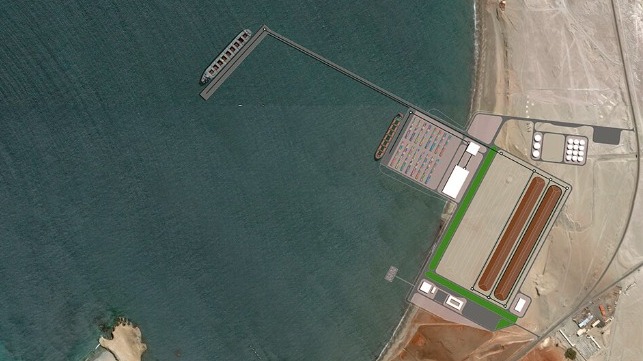Chinese Firm Wins Tender to Build Peru’s Third Largest Seaport

Peru’s government, through its Private Investment Promotion Agency (PROINVERSIÓN), has awarded a subsidiary of the Chinese firm Jinzhao the tender to build the country’s third largest port, San Juan de Marcona. The new terminal is projected to cost $405 million and will be located in Ica on the southern coast of Peru, about 300 miles from Lima.
Jinzhao Peru will design, finance and construct the new terminal, and will have a 30-year concession to operate and maintain the port.
“We hope that the construction begins by end of 2025, with the first phase of the port coming online around two years later,” head of Proinversion Jose Salardi told Reuters on Friday.
The multipurpose port is expected to attract mining investments worth $15 billion in the south of the country and improve logistics for the regions of Ica, Ayacucho, Apurimac, Cusco and Arequipa. The port will directly benefit the $2 billion Pampa de Pongo iron ore mining project, being developed by Jinzhao. Once fully operational, the project will produce over half of Peru’s seaborne iron exports.
The port will have two docks and the equipment to handle dry bulk, containers, general and liquid cargo. When operational, it will have a capacity of 19 million tons of cargo per year, not far behind Callao and Chancay, which each handle 30 million tons.
The new port is the second Chinese port investment in Peru, after COSCO’s $3 billion Chancay Multipurpose Port Terminal project, which is currently under construction. The ambitious port project features a container terminal with 11 berths and another for bulk cargo, general cargo and rolling cargo. The new terminals are scheduled to come online in 2025.
During a Port of Los Angeles conference call last week, APM Terminals regional head Leo Huisman said that COSCO’s investment in Peru is a game-changer, and is likely to transform how trade flows through the west coast of South America.
“The super-modern port will redefine how shipping lines will service the west coast of South America. I do believe that with its capabilities, its crane setup and its water depth, a lot of smaller ports in Chile, Peru and Ecuador will be served in future by a different concept - not any more big ships going in directly,” said Huisman.
